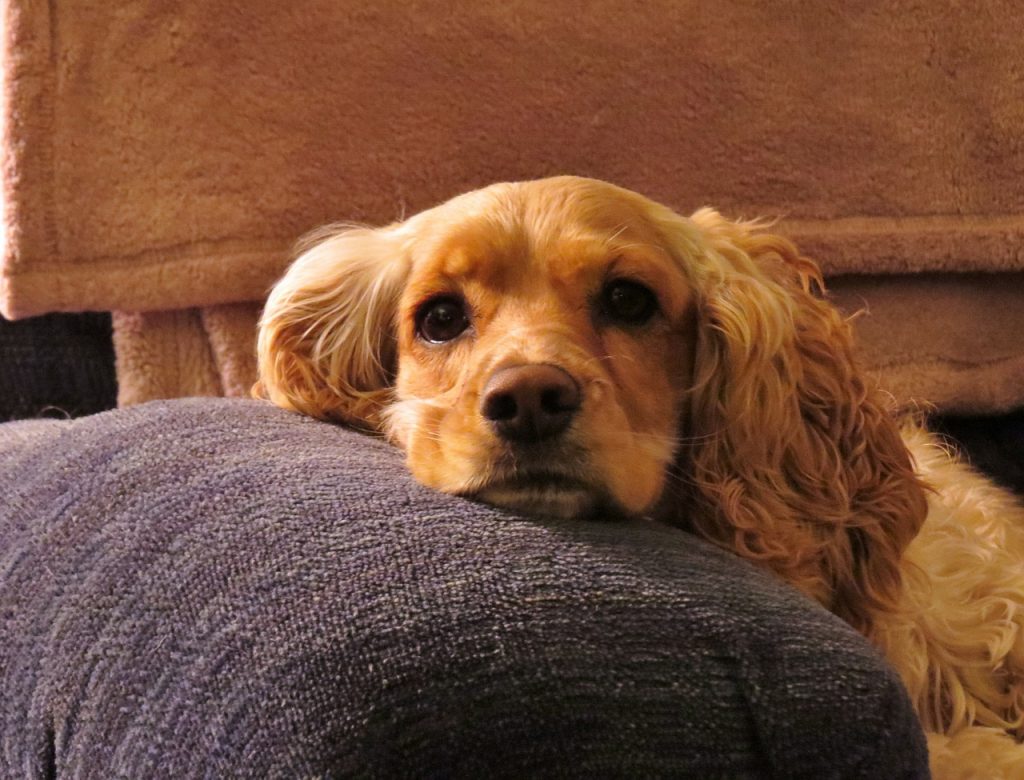
Cocker spaniels are small sporting dogs that come in two "flavors". One is long-haired and American. The other is sporty and from the UK.
Cocker spaniels are the smallest of the working land spaniels. The English springer spaniels were the largest of this family, while the field spaniel made up the middle sizes. At one time all three sizes could be found in the same litter and were registered according to size. Today, the cocker spaniel has been split into two separate breeds, one evolving in the United States and having long, flowing hair, and the other evolving in Britain and remaining relatively similar to the field and springer spaniel breeds.
The two breeds have a similar origin in these smaller spaniels, but the American cocker has evolved as a much more glamorous dog, greatly loved by the dog show fancy. The English breed still maintains a working-type in addition to its feathery show-type. It is because of these differences that appeared in the breed on both sides of the Atlantic, that the two have been split into separate breeds.
The American cocker spaniel is known as the cocker spaniel in the United States, because to Americans, this is the cocker spaniel. The American Kennel Club recognized the cocker spaniel breed in 1878 in the early years of the American dog fancy. The breed was imported from Britain, where it had been used to flush game birds that ran into deep thickets. Among these birds were the woodcocks, and the cocker got its name for being a specialist at flushing woodcock. The American fancier had no real use for the dog as a flusher of game.
The American Type Evolves.
That task was left up to larger springer spaniels, field spaniels, and Sussex spaniels, which were also being imported. The American water spaniel and the Boykin spaniel could also be used as a flushing spaniel. The vast majority of cockers imported to the United States at this time became family pets and show dogs. The really long hair on the American cocker did not become established until after the Second World War, but the American cocker always had a broader skull than the English. It was decided that it would be a bit shorter in the leg as well. American cockers are generally not used for hunting, but a few fanciers are trying to develop it back into a flushing spaniel. A few individuals exist in certain lines that lack the really long coat of the modern show cocker, and these are much sought after for those wanting this breed to be a hunting dog.
The other breed of cocker spaniel is the English cocker, which is called the cocker spaniel in the rest of the world. It is called the English cocker because its breed type was established in Britain. It resembles a smaller version of the field and English springer spaniels to which it is closely related. It has a longer muzzle and copious feathering on its legs and feet, but this spaniel’s feathering is less profuse than the American cocker. The English cocker was first separated from the American in the United States. In 1936, a meeting was held in Bryn Mawr, Pennsylvania, to create a separate registry and standard for the English-type cocker.
The two breeds remained the same breed until 1938, when the English cocker club made a rule that no member of the club could breed an English-type cocker to an American-type cocker. The English cocker was then separated off as its own breed. English cockers occur in working-type form, as well, which is lightly built and in various colors. It resembles the working-type springer spaniel. English cockers tend to be more responsive to training than Americans, but red English cockers are prone to a condition called avalanche of rage syndrome in which the dog attacks without warning. This has been a problem in some lines of English cockers and springers
